机器学习建模调参方法总结

极市导读
对于数据挖掘项目,本文将学习如何建模调参?从简单的模型开始,如何去建立一个模型;如何进行交叉验证;如何调节参数优化等。 >>加入极市CV技术交流群,走在计算机视觉的最前沿
前言
数据及背景
理论简介
知识总结
回归分析
长尾分布
欠拟合与过拟合
-
模型没有很好或足够数量的训练训练集
-
模型的训练特征过于简单
-
模型没有很好或足够数量的训练训练集
-
训练数据和测试数据有偏差
-
模型的训练过度,过于复杂,没有学到主要的特征
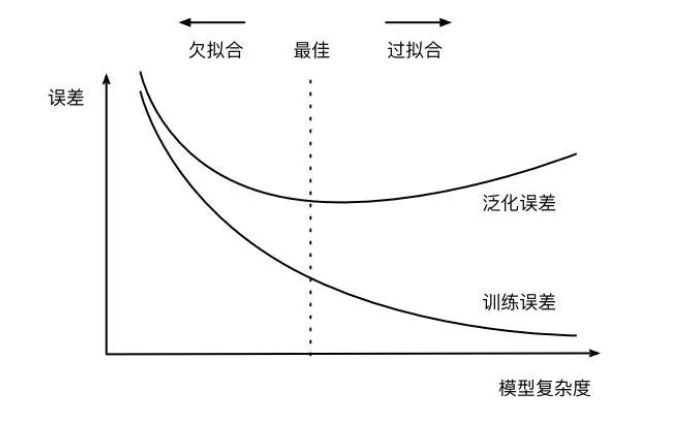
正则化
-
L1正则化是指权值向量 中各个元素的绝对值之和,通常表示为 -
L2正则化是指权值向量 中各个元素的平方和然后再求平方根(可以看到Ridge回归的L2正 则化项有平方符号)
-
L1正则化可以产生稀疏权值矩阵,即产生一个稀疏模型,可以用于特征选择 -
L2正则化可以防止模型过拟合 (overfitting)
调参方法
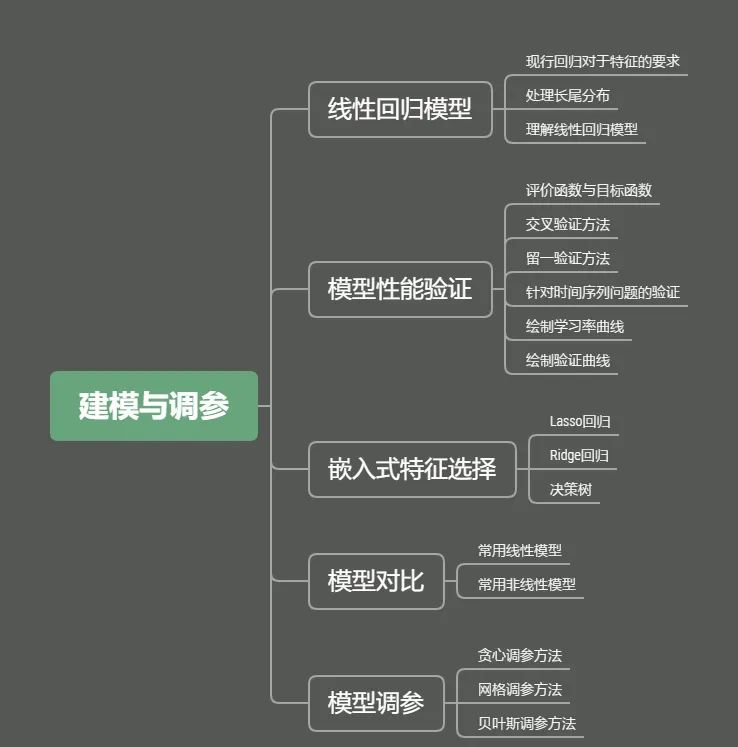
建模与调参
线性回归
sklearn.linear_model.LinearRegression(fit_intercept=
True,normalize=
False,copy_X=
True,n_jobs=
1

model = LinearRegression(normalize=True)
model.fit(data_x, data_y)
model.intercept_, model.coef_
'intercept:'+ str(model.intercept_)
sorted(dict(zip(continuous_feature_names, model.coef_)).items(), key=
lambda x:x[
1], reverse=
True)
## output
|
|
|
|
|
|
|
|
|
|
|
|
|
|
|
|
|
|
|
|
|
|
|
|
|
|
|
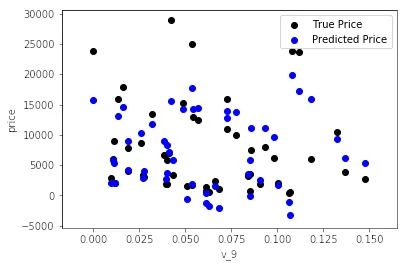

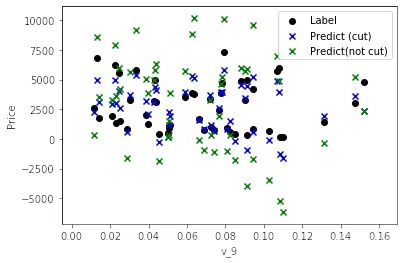
|
|
|
|
|
|
|
|
|
|
|
|
data_y = np.log(data_y + 1)
# 交叉验证
scores = cross_val_score(LinearRegression(normalize=True), X=data_x, \
y=data_y, cv=5, scoring=make_scorer(mean_absolute_error))
np.mean(scores)
import datetime
sample_feature = sample_feature.reset_index(drop=True)
split_point = len(sample_feature) // 5 * 4
train = sample_feature.loc[:split_point].dropna()
val = sample_feature.loc[split_point:].dropna()
train_X = train[continuous_feature_names]
train_y_ln = np.log(train['price'] + 1)
val_X = val[continuous_feature_names]
val_y_ln = np.log(val['price'] + 1)
model = model.fit(train_X, train_y_ln)
fill_between()
train_sizes - 第一个参数表示覆盖的区域
train_scores_mean - train_scores_std - 第二个参数表示覆盖的下限
train_scores_mean + train_scores_std - 第三个参数表示覆盖的上限
color - 表示覆盖区域的颜色
alpha - 覆盖区域的透明度,越大越不透明 [0,1]
mean_absolute_error(
val_y_ln,
model
.predict(
val_X))
0.19443858353490887
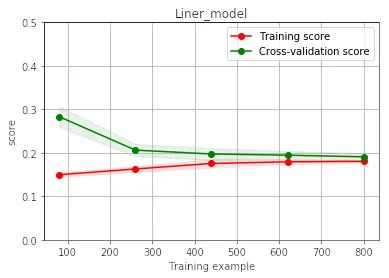
线性模型
models = [LinearRegression(),
Ridge(),
Lasso()]
result = dict()
for model
in models:
model_name = str(model).split(
'(')[0]
scores = cross_val_score(model, X=train_X, y=train_y_ln, verbose=0, cv = 5, scoring=make_scorer(mean_absolute_error))
result[model_name] = scores
print(model_name +
' is finished')
result = pd.DataFrame(result)
result.index = [
'cv' + str(x)
for x
in range(1, 6)]
result
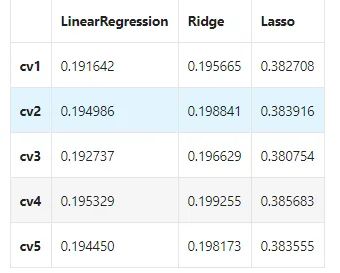
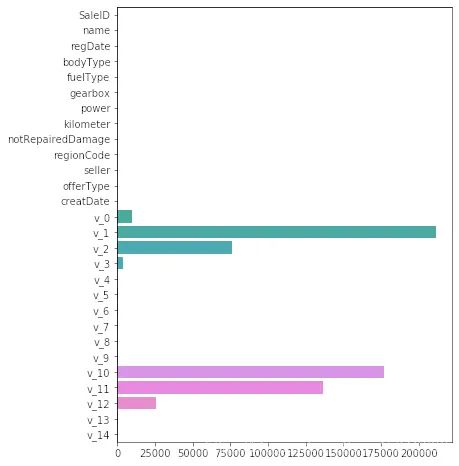

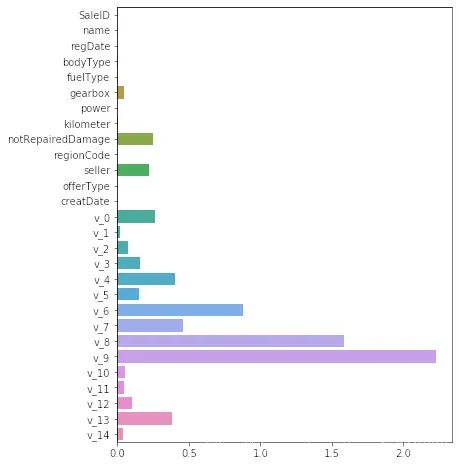
非线性模型
-
SVR:用于标签连续值的回归问题
-
SVC:用于分类标签的分类问题
-
loss - 选择损失函数,默认值为ls(least squres),即最小二乘法,对函数拟合 -
learning_rate - 学习率 -
n_estimators - 弱学习器的数目,默认值100 -
max_depth - 每一个学习器的最大深度,限制回归树的节点数目,默认为3 -
min_samples_split - 可以划分为内部节点的最小样本数,默认为2 -
min_samples_leaf - 叶节点所需的最小样本数,默认为1
-
hidden_layer_sizes - hidden_layer_sizes=(50, 50),表示有两层隐藏层,第一层隐藏层有50个神经元,第二层也有50个神经元 -
activation - 激活函数 {‘identity’, ‘logistic’, ‘tanh’, ‘relu’},默认relu -
identity - f(x) = x -
logistic - 其实就是sigmod函数,f(x) = 1 / (1 + exp(-x)) -
tanh - f(x) = tanh(x) -
relu - f(x) = max(0, x) -
solver - 用来优化权重 {‘lbfgs’, ‘sgd’, ‘adam’},默认adam -
lbfgs - quasi-Newton方法的优化器:对小数据集来说,lbfgs收敛更快效果也更好 -
sgd - 随机梯度下降 -
adam - 机遇随机梯度的优化器 -
alpha - 正则化项参数,可选的,默认0.0001 -
learning_rate - 学习率,用于权重更新,只有当solver为’sgd’时使用 -
max_iter - 最大迭代次数,默认200 -
shuffle - 判断是否在每次迭代时对样本进行清洗,默认True,只有当solver=’sgd’或者‘adam’时使用
-
采用连续的方式构造树,每棵树都试图纠正前一棵树的错误 -
与随机森林不同,梯度提升回归树没有使用随机化,而是用到了强预剪枝 -
从而使得梯度提升树往往深度很小,这样模型占用的内存少,预测的速度也快
from sklearn.linear_model
import LinearRegression
from sklearn.svm
import SVC
from sklearn.tree
import DecisionTreeRegressor
from sklearn.ensemble
import RandomForestRegressor
from sklearn.ensemble
import GradientBoostingRegressor
from sklearn.neural_network
import MLPRegressor
from xgboost.sklearn
import XGBRegressor
from lightgbm.sklearn
import LGBMRegressor
models = [LinearRegression(),
DecisionTreeRegressor(),
RandomForestRegressor(),
GradientBoostingRegressor(),
MLPRegressor(solver=
'lbfgs', max_iter=
100),
XGBRegressor(n_estimators =
100, objective=
'reg:squarederror'),
LGBMRegressor(n_estimators =
100)]
result = dict()
for model
in models:
model_name = str(model).split(
'(')[
0]
scores = cross_val_score(model, X=train_X, y=train_y_ln, verbose=
0, cv =
5, scoring=make_scorer(mean_absolute_error))
result[model_name] = scores
print(model_name +
' is finished')
result = pd.DataFrame(result)
result.index = [
'cv' + str(x)
for x
in range(
1,
6)]
result

-
num_leaves - 控制了叶节点的数目,它是控制树模型复杂度的主要参数,取值应 <= 2 ^(max_depth) -
bagging_fraction - 每次迭代时用的数据比例,用于加快训练速度和减小过拟合 -
feature_fraction - 每次迭代时用的特征比例,例如为0.8时,意味着在每次迭代中随机选择80%的参数来建树,boosting为random forest时用 -
min_data_in_leaf - 每个叶节点的最少样本数量。它是处理leaf-wise树的过拟合的重要参数。将它设为较大的值,可以避免生成一个过深的树。但是也可能导致欠拟合 -
max_depth - 控制了树的最大深度,该参数可以显式的限制树的深度 -
n_estimators - 分多少颗决策树(总共迭代的次数) -
objective - 问题类型 -
regression - 回归任务,使用L2损失函数 -
regression_l1 - 回归任务,使用L1损失函数 -
huber - 回归任务,使用huber损失函数 -
fair - 回归任务,使用fair损失函数 -
mape (mean_absolute_precentage_error) - 回归任务,使用MAPE损失函数
模型调参
-
贪心调参 -
GridSearchCV调参 -
贝叶斯调参
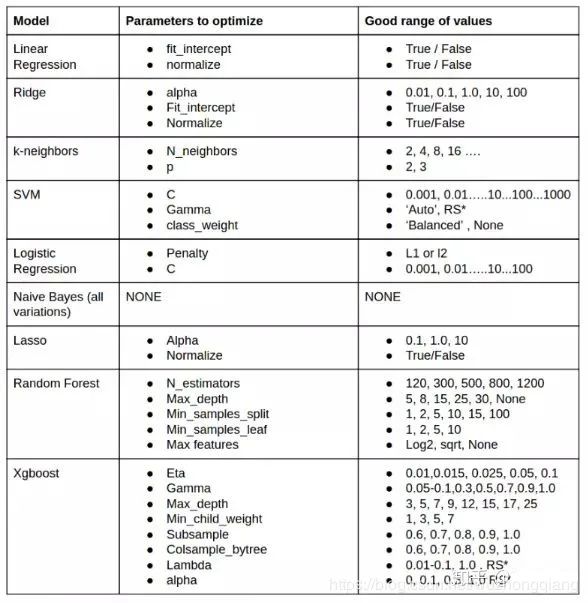
objectives = [
"rank:map",
"reg:gamma",
"count:poisson",
"reg:tweedie",
"reg:squaredlogerror"]
max_depths = [1, 3, 5, 10, 15]
lambdas = [.1, 1, 2, 3, 4]
best_obj = dict()
for obj in objective:
model = LGBMRegressor(objective=obj)
score = np.mean(cross_val_score(model, X=train_X, y=train_y_ln, verbose=0, cv = 5, scoring=make_scorer(mean_absolute_error)))
best_obj[obj] = score
best_leaves = dict()
for leaves in num_leaves:
model = LGBMRegressor(objective=min(best_obj.items(), key=lambda x:x[1])[0], num_leaves=leaves)
score = np.mean(cross_val_score(model, X=train_X, y=train_y_ln, verbose=0, cv = 5, scoring=make_scorer(mean_absolute_error)))
best_leaves[leaves] = score
best_depth = dict()
for depth in max_depth:
model = LGBMRegressor(objective=min(best_obj.items(), key=lambda x:x[1])[0],
num_leaves=min(best_leaves.items(), key=lambda x:x[1])[0],
max_depth=depth)
score = np.mean(cross_val_score(model, X=train_X, y=train_y_ln, verbose=0, cv = 5, scoring=make_scorer(mean_absolute_error)))
best_depth[depth] = score
parameters = {'objective': objective , 'num_leaves': num_leaves, 'max_depth': max_depth}
model = LGBMRegressor()
clf = GridSearchCV(model, parameters, cv=5)
clf = clf.fit(train_X, train_y)
clf.best_params_
model = LGBMRegressor(objective='regression',
num_leaves=55,
max_depth=15)
np.mean(cross_val_score(model, X=train_X, y=train_y_ln, verbose=0, cv = 5, scoring=make_scorer(mean_absolute_error)))
0.13626164479243302
-
贝叶斯调参采用高斯过程,考虑之前的参数信息,不断地更新先验; -
网格搜索未考虑之前的参数信息贝叶斯调参迭代次数少,速度快;网格搜索速度慢,参数多时易导致维度爆炸 -
贝叶斯调参针对非凸问题依然稳健;网格搜索针对非凸问题易得到局部最优
-
定义优化函数(rf_cv, 在里面把优化的参数传入,然后建立模型, 返回要优化的分数指标) -
定义优化参数 -
开始优化(最大化分数还是最小化分数等) -
得到优化结果
from bayes_opt import BayesianOptimization
def rf_cv(num_leaves, max_depth, subsample, min_child_samples):
val = cross_val_score(
LGBMRegressor(objective =
'regression_l1',
num_leaves=
int(num_leaves),
max_depth=
int(max_depth),
subsample = subsample,
min_child_samples =
int(min_child_samples)
),
X=train_X, y=train_y_ln, verbose=
0, cv =
5, scoring=make_scorer(mean_absolute_error)
).mean()
return
1 - val
rf_bo = BayesianOptimization(
rf_cv,
{
'num_leaves': (
2,
100),
'max_depth': (
2,
100),
'subsample': (
0.1,
1),
'min_child_samples' : (
2,
100)
}
)
rf_bo.maximize()
公众号后台回复“项目实践”获取50+CV项目实践机会~

“
点击阅读原文进入CV社区
收获更多技术干货
登录查看更多
相关内容
专知会员服务
20+阅读 · 2020年1月7日

